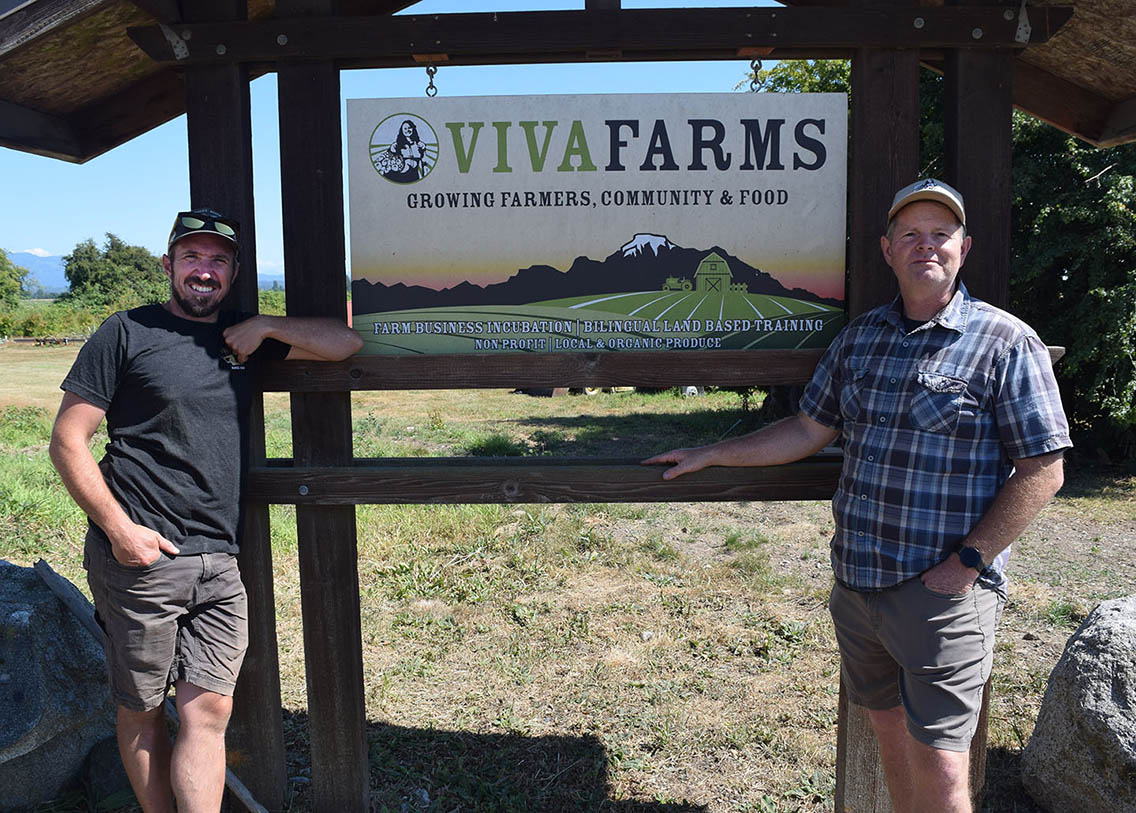
Just a short drive north from metropolitan Seattle sits one of the largest and most fertile agricultural areas in the Pacific Northwest.
With cool marine temperatures, a long growing season, and thousands of acres of farmland fed by the Skagit River as it flows west from the Cascade mountains into Puget Sound, Washington’s Skagit Valley is an important region for commercial food production.
An ongoing grant from USDA’s Natural Resources Conservation Service (NRCS) will help ensure that the rich soils and local farmers in Skagit Valley continue to thrive for future generations.
Titled “From Farmers to Soil Health Managers -- Participatory Design of On-Farm Trials to Stimulate Adoption of Innovative Conservation Techniques by Historically Underserved Farmers in the Puget Sound Region,” this NRCS Conservation Innovation Grant (CIG), which focuses on soil health in the valley, is aimed at teaching local, small-scale farmers in the region how to become better managers of their farms’ natural resources through conservation practices. The four-year grant was awarded to Viva Farms – a local non-profit with the mission of empowering “aspiring and limited-resource farmers” in Skagit Valley.
“A lot of the farmers had almost no exposure to these ways of thinking about soil health,” explained Rob Smith, director of Programs and Operations for Viva Farms.
He said that even though some of the participants had been farming for several years, they were still relatively new to soil health concepts like cover crops, intercropping, and no-till farming.
As part of the grant project, the team at Viva Farms worked with other local agricultural service providers to provide outreach and training for underserved producers in Skagit Valley. All training materials were translated into Spanish, and at each training session Spanish language interpreters were on hand to make sure the information was clear to the producers. Earlier this year farmers were trained on techniques to measure key soil properties and health indicators, and with the help of Viva Farms staff they developed individual trials on plots of land to test the techniques.
“They are good farmers,” Smith noted during a visit with the producers on a dusty afternoon in late July outside of Burlington, Washington. “They have a lot of knowledge, and they have a lot of skills, but this is a new realm for them.”
With the Cascade Range hovering in a blue haze on the distant horizon, Smith commented on the fertility of the Skagit Valley soil and the importance of ensuring its health – and productivity – for the future. He pointed to farmers busily working their small test plots in the afternoon sun.
“There are a lot of people who don’t have access to this knowledge,” Smith explained. “These are farmers who are going to be farming for another 10, 20, 30 or 40 years…If they are fluent in this conversation (of natural resource conservation), then the next generation of farmers is going to be soil health managers. That is important.”
About half of the crops planted on the test plots are perennial berries like blackberries, raspberries or strawberries, and the farmers are testing everything from intercropping and cover crops to no-till planting. Most farmers are using white clover or rye as a cover crop trial to see how it affects soil health, management, labor, and harvest on the sites.
“I’ve never really found another place to do this,” Nate Minor, one of the farmers said while working his tenth of an acre plot. “It is cool that Viva was able to help coordinate all of this, help bring all of the pieces together, and help give us access to this project.”
Minor’s background is in teaching math and physics, but he decided to take a break from classroom education and try his hand at farming.
“I grew up here and my family has been here for about five generations, but it has been at least four generations since anyone has been involved with agriculture,” Minor said, sporting a floppy straw hat and pushing an antique wheel hoe through the loamy soil on his plot where he is experimenting with growing buckwheat and fava beans. “I’ve been looking to grow better food for myself, and it seemed like a natural thing to try.”
Executive Director of Viva Farms Michael Frazier noted that small-scale and non-traditional farmers like Minor will really gain knowledge from the USDA grant-funded trials at the farm site. He said once the farmers see how these soil health practices can improve their yield and keep the soil productive, they may be encouraged to increase those practices as their operations grow.
“The year-after-year investment in the soil hopefully will have an economic impact on the quality of the produce and the marketing ability of the product,” Frazier said. “They are not just growing produce and extracting nutrients, but they are actually trying to grow produce that is highly nutrient-dense.
“Once they start implementing those practices on a smaller scale and then they scale up (the operation), the impact grows over time,” he added.
The CIG competitive program supports the development of new tools, approaches, practices, and technologies to further natural resource conservation on private lands. Through creative problem solving and innovation, CIG partners work to address our nation's water quality, air quality, soil health and wildlife habitat challenges, all while improving agricultural operations.
For more information contact your local USDA Service Center or visit the NRCS Conservation Innovation Grants website.
